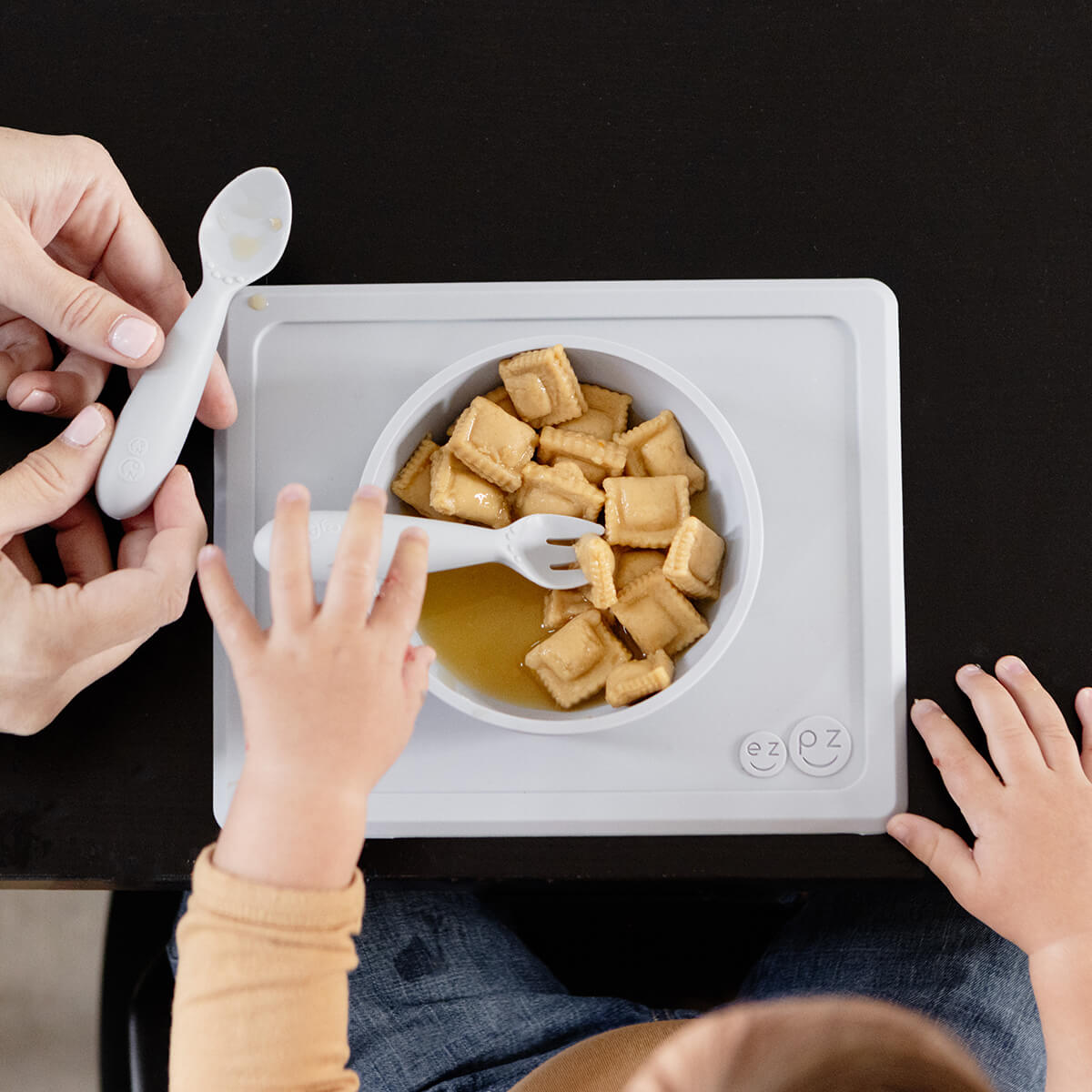Are you wanting to offer pasta to your baby, but nervous about giving them a potentially allergenic food? Navigating a possible allergic reaction on top of starting solids can be overwhelming for parents. Here are some tips for offering pasta to your baby.
The Big 9: An allergic reaction to food may seem scary, but 90% of food allergies tie back to only nine foods. These foods are nicknamed the ‘Big 9’ to spread awareness about food allergies.
- Common Allergenic Foods: The nine most common allergenic foods in the United States are: milk, peanuts, fish, tree nuts, egg, wheat, shellfish, soy and sesame.
Pasta Prerequisites: Now that you are aware of the 9 most common allergenic foods, it’s important to know that pasta usually contains 2 of them (egg and wheat). For this reason, I teach families to offer egg separately before introducing pasta to their baby. Serving egg (and assessing for a reaction) allows parents to tackle one potentially allergenic food at a time.
- Expert Tip: If you are nervous about serving potentially allergenic foods, make sure another adult is home with you. I also like to serve the food for three days in a row. This could be Friday (small amount / check for any reactions), Saturday (larger amount / check for any reactions) and Sunday (largest amount / check for any reactions). Typically, weekends provide you with a little more time to look for reactions + have other caregivers at home with you for support.
Choosing a Pasta: Pasta is a great way to introduce your baby to the potentially allergenic food wheat. But choosing the right type of pasta for your baby depends on the age and stage of your little one.
-
For Early Eaters (just starting BLW): I offer long, textured pasta to help with oral sensory input of the tongue and lips. Examples of textured pasta are the spirals on fusilli and the ridges on rigatoni. These textures will help reduce gagging episodes that are common when first introducing pasta to little ones.
- Expert Tip: Gagging is not a sign of an allergic reaction.
-
For Babies with a Pincer Grasp: I offer spaghetti broken into pieces about the length of your pinky finger. This will make it easier for your baby to pick up, chew and swallow (and reduce choking risk attributed to long pasta noodles). I also offer pipe rigate, which provides a unique curved shape and textured ridges that their tongue can easily find in their mouth.
- Expert Tip: Add moisture to the pasta by adding a little sauce, butter, breastmilk or oil before serving. This will help increase the sensory profile and decrease pocketing.
-
For 12-month-old Babies: Try offering a mixed-texture pasta. Some examples are ravioli and tortellini. These types of pasta are often stuffed with cheese, meat or vegetables. When offering these new and complex pasta types I cut them with a crinkle cutter or pre-load it on to a fork (yes – at 12 months you can introduce your baby to a fork! ). Then I gradually increase the size of the pasta until it is offered in its complete (uncut) form.
- Expert Tip: Learning to self-feed is an important developmental milestone, and the ezpz Mini Utensils are designed to help toddlers learn how to eat tricky textures (such as pasta) with a spoon (scooping) and fork (piercing).
Introducing potentially allergenic foods can be intimidating. But I hope these tips will help you choose a pasta that your baby will enjoy! And let us know what pasta is your little one's favorite. Tag us in your pasta pics, too! #ezpzfun



















